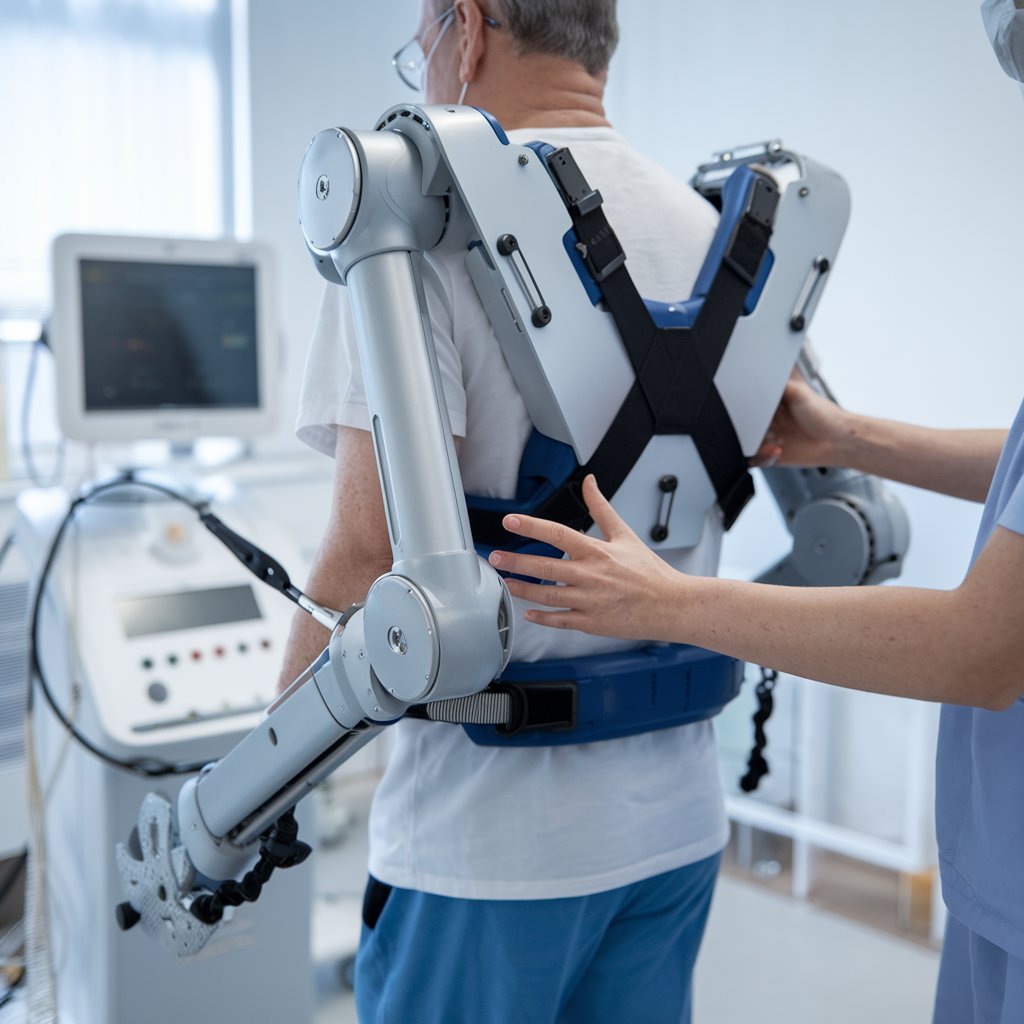The exoskeleton industry, known for its groundbreaking advancements in wearable robotics, is poised for significant transformation. Exoskeletons, which enhance physical capabilities and aid in rehabilitation, are evolving rapidly due to technological advancements and increasing applications across various sectors. This article explores the future trends, opportunities, and innovations shaping the exoskeleton industry.
Technological Advancements in Exoskeleton industry
Enhanced Mobility and Flexibility: Future exoskeletons are expected to feature enhanced mobility and flexibility. Innovations in materials and design will lead to lighter and more adaptable exoskeletons that provide greater comfort and ease of movement. Advanced actuators and sensors will improve the precision and responsiveness of these devices, making them more effective in various applications.
Integration with AI and Machine Learning: The integration of artificial intelligence (AI) and machine learning into exoskeleton technology will revolutionize the industry. AI algorithms will enable exoskeletons to learn and adapt to the user’s movements and preferences, optimizing performance and reducing fatigue. Machine learning will facilitate predictive maintenance and real-time adjustments, enhancing the overall user experience.
Battery Life and Power Management: Advances in battery technology and power management will address one of the key limitations of current exoskeleton systems. Future exoskeletons will feature longer battery life and more efficient power management, allowing for extended usage and improved functionality in various environments.
Exoskeleton industry Expanding Applications
Healthcare and Rehabilitation: In healthcare, exoskeletons are set to transform rehabilitation and assistive technologies. Advanced exoskeletons will provide more effective support for individuals with mobility impairments, aiding in physical therapy and recovery. Enhanced design and functionality will make these devices more accessible and effective for patients with diverse needs.
Industrial and Military Applications: The industrial sector will see increased adoption of exoskeletons to enhance worker safety and productivity. Exoskeletons will help reduce the risk of musculoskeletal injuries by providing support during heavy lifting and repetitive tasks. In the military, exoskeletons will enhance soldiers’ endurance and strength, improving performance in demanding environments.
Consumer and Sports Applications: The consumer market is expected to embrace exoskeletons for various applications, including sports and recreational activities. Exoskeletons will offer athletes enhanced strength and endurance, while also providing recreational users with new experiences and capabilities. The integration of exoskeletons into consumer products will open up new opportunities for innovation and growth.
Exoskeleton industry Trends and Growth Opportunities
The global exoskeleton Industry size is estimated to be USD 0.7 billion in 2023 and is projected to reach USD 3.7 billion by 2028, at a CAGR of 38.6%. The growing adoption of robotic rehabilitation in healthcare and rising investment in the advancement of the exoskeleton are responsible for the growth of the exoskeleton market. Additionally, the rising insurance coverage for exoskeleton technology is also responsible for the markets growth.
Download PDF Brochure @
https://www.marketsandmarkets.com/pdfdownloadNew.asp?id=40697797

Increasing Investment and Research: Significant investment in research and development is driving innovation in the exoskeleton industry. Collaboration between technology companies, research institutions, and healthcare providers will accelerate the development of advanced exoskeleton solutions and expand their applications.
Growing Awareness and Acceptance: As awareness of the benefits of exoskeleton technology increases, more industries and consumers are expected to adopt these devices. Positive outcomes in healthcare and successful deployments in industrial settings will drive broader acceptance and adoption.
Emergence of New Market Segments: Emerging market segments, such as exoskeletons for specific health conditions or niche industrial applications, will create new growth opportunities. Companies that focus on these specialized segments will have the potential to capture a significant share of the market.
Challenges and Considerations
Cost and Accessibility: The high cost of exoskeleton technology remains a barrier to widespread adoption. Reducing production costs and improving affordability will be essential for making exoskeletons accessible to a broader audience.
Regulatory and Safety Standards: Ensuring compliance with regulatory and safety standards is critical for the successful deployment of exoskeletons. Adhering to industry regulations and maintaining high safety standards will be necessary to build trust and gain market acceptance.
Integration and Usability: Integrating exoskeletons into existing workflows and ensuring ease of use are key challenges. Designing user-friendly interfaces and providing effective training will be important for maximizing the benefits of exoskeleton technology.
future of the exoskeleton industry
The future of the exoskeleton industry is bright, with numerous advancements and opportunities on the horizon. Technological innovations, expanding applications, and increasing investment will drive the growth of the industry. As exoskeleton technology continues to evolve, it will play a transformative role in enhancing human capabilities, improving safety, and expanding possibilities across various sectors.
The exoskeleton industry is set for remarkable growth and innovation. Embracing emerging technologies, addressing key challenges, and exploring new applications will be crucial for companies looking to capitalize on the future potential of exoskeletons. With ongoing advancements and a broadening range of applications, exoskeleton technology will continue to shape the future of human performance and capability.
